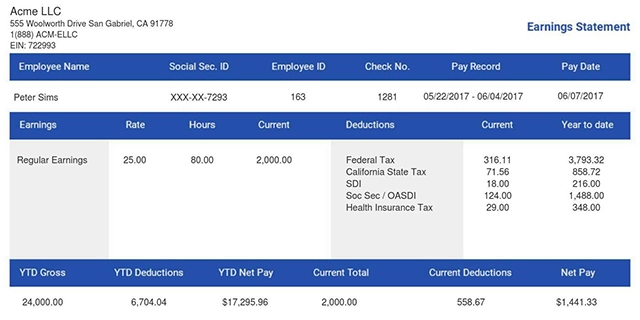Small Business Guide: Managing The Payroll Process By Yourself
Before long, your new business will grow to the extent that you need to hire employees. At this point, you need to make the call about how to handle the payroll process. For starters, the last thing you need to worry about is finding the cash to pay for this service. The cost of a bookkeeper can set you back almost $46,000 per year.
The good news is that it's possible to manage your own payroll and it's not that difficult. Here's how it works.
Also read: Report Cash Income Without 1099 Form
1. Make It Official
Check out the legal requirements around the payroll process for your state.
Register for Employer Identification Numbers, get insured and sign up for workers' compensation. Next, choose your payroll schedule and make a note of the following important dates:
- Pay dates for your employees
- Due dates for tax payments
- Tax filing deadlines
Don't forget the legalities around displaying the relevant posters on your premises. These usually have to do with Occupational Health and Safety and other important information.
2. Onboard Your Employees
Make sure each new employee fills out a W-4 form right away. This gives you time to calculate the correct deductions before payday. The W-4 helps keep track of their allowances and dependents. This, in turn, affects the amount of taxes to deduct from their paychecks. You need to file a hire report for each new employee as well.
Also read: What Are Pay Stub Deduction Codes?
3. Generate Paystubs
When payday rolls around, you can pay your workers via EFT or in cash. It is a good idea to give each of them a printed paystub too. Generating a pay stub can be tedious and confusing but it is an important part of the payroll process. Using a pay stub maker makes this chore a quick and easy one. You simply follow these steps.
The whole process takes about 2 minutes. Your calculations will be checked by a team of qualified accountants. Keep a careful record of all deductions and payments to employees as well as their paystubs. You will need it when tax time rolls around.
4. Final Steps In The Payroll Process
Taxes are one of those certainties in life. You can check the current deadlines for filing your business taxes on the efile website. As an employer, the two most important forms that you must submit are the W-2 Form and the 1099 Form. Both of these can also be generated online, so there's no need to panic. Simply enter all the information you have compiled regarding each pay date and off you go.
Again, it's quick and easy. When you've got all your facts and figures together, you can submit the information to the IRS. In addition to your annual tax obligations, Employer Federal Tax Returns are usually submitted quarterly. There may be additional tax requirements depending on the state you operate in.
Need Help?
If you have any difficulties processing your paystubs or need to make a correction, we are here for you!
Let's get you started by creating your paystub today.















